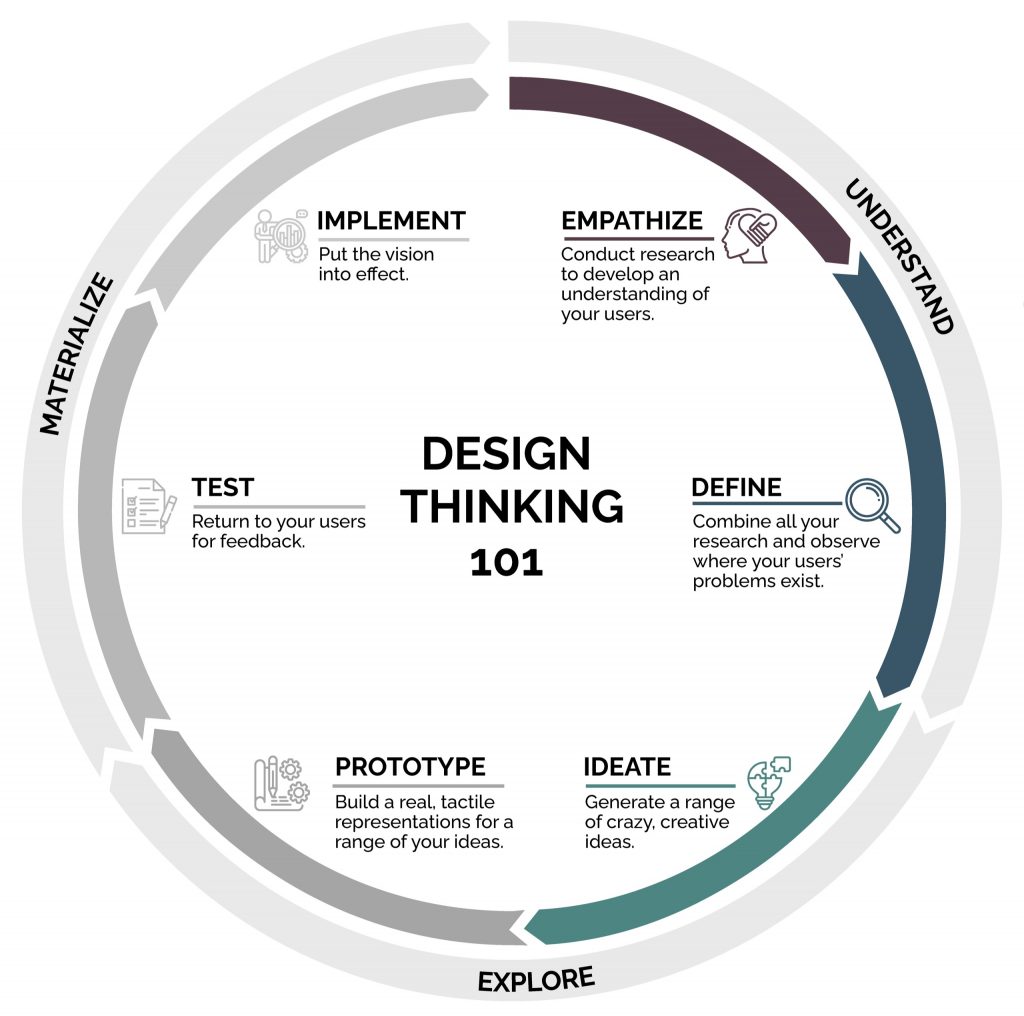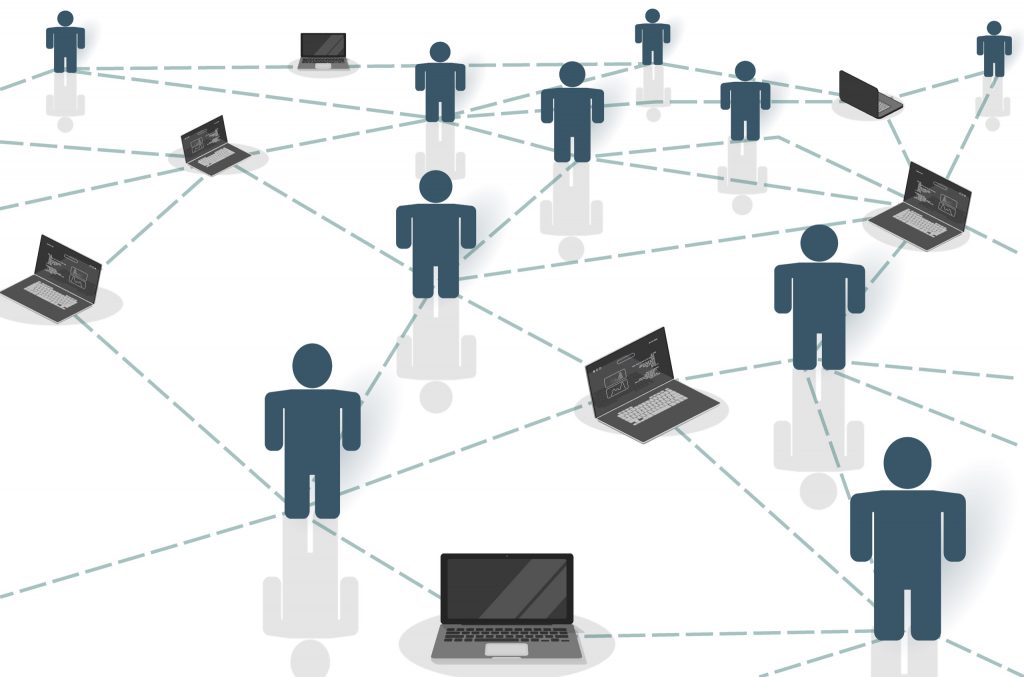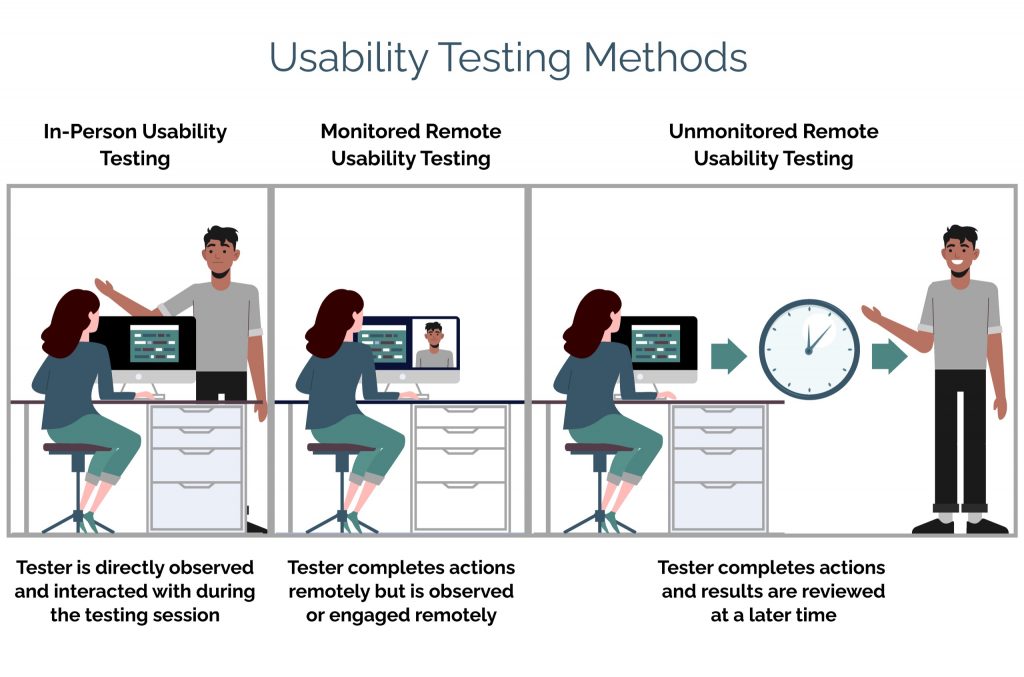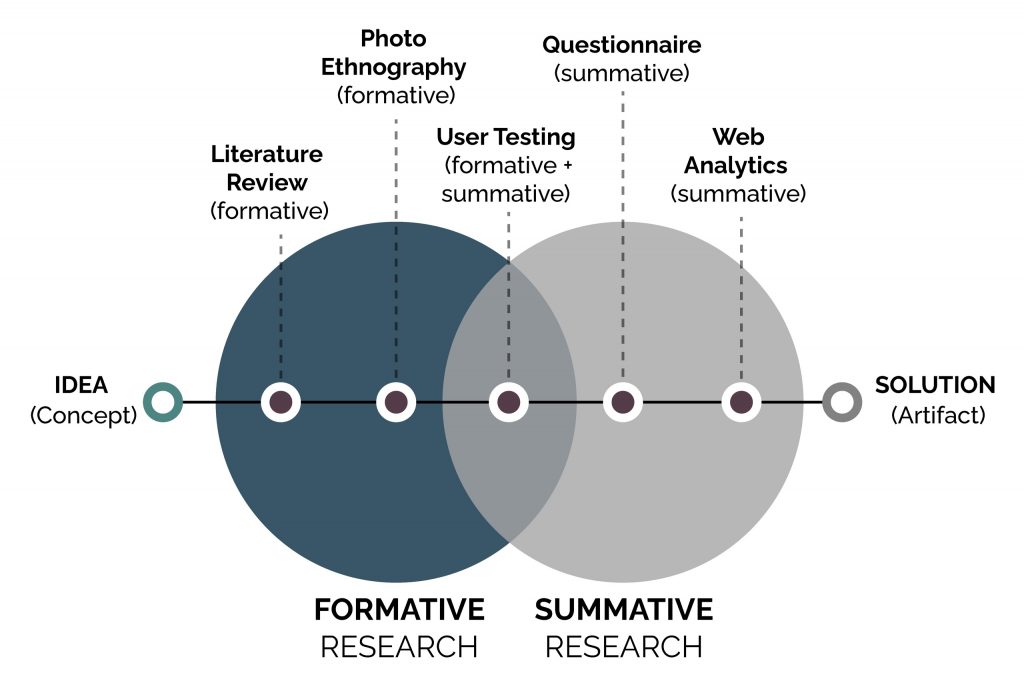In recent years, the concept of user experience (UX) has become more prominent in the design and development of software, hardware, and other innovative technology. The essence of UX is putting the needs and perspectives of the people who would most likely use the technology front and center in the design and development process. The two critical components to the UX concept are user experience design (UXD) and user experience research (UXR). UXD is relatively familiar to many tech professionals, as it employs rapid iteration concepts such as design thinking to design interfaces and other aspects of technology with empathy and flexibility. This post focuses on UXR, a powerful practice for informing and shaping designs and prototypes that build the right thing for target users. UXR is the process of researching to understand what users or potential users of technology need to do work, complete a transaction, or otherwise have a worthwhile experience using a website, platform, app, or another type of technology. The essence of UXR is gathering data and synthesizing it to improve usability.
UXR plays a vital role in ensuring that the UXD process produces a very attuned design to the actual customer or user needs. It enriches the design process by incorporating user context; it’s not just a great idea about what people need that was formulated solely in a design studio or lab. UXR dramatically increases the chance that the technology to be built will solve a significant problem rather than just bringing someone’s “brilliant idea” to fruition. A UX approach that incorporates research saves targeted end-users the headache of a non-user-friendly technology and protects the company or agency from using the technology to get work done from wasting substantial sums of money.
Another critical consideration of UXR is its origins. UXR as a practice was mainly developed by master’s degree and Ph.D. qualified social scientists with extensive backgrounds in studying human behavior and applying insights to the development and improvement of products and programs. Early pioneers of this work include anthropologist Ken Anderson and sociologist Sam Lander. Early adopters of UXR as part of a strategy and UXD include tech companies such as Facebook, Google, Instagram, and Amazon.
Let’s delve deeper into UXR’s essential concepts that make a software designer’s life easier.
Understanding a Typical UX Research and Design Flow
If one uses the design thinking framework as pictured below, UXR is typically the leading activity during the understanding phase (empathize and define) and the materialize phase (test). The graphic’s circular shape indicates that the understanding phase happens at the beginning of the design cycle of a new product or the birth of a redesign or reiteration. The understanding phase focuses on formative or exploratory research to surface pain points or needs. The design cycle’s testing portion entails more summative research to test a design prototype’s usability and intuitiveness. Some testing designs incorporate the concept of “user delight” to surface how potential users of a technology subjectively perceive or feel about the prototype. UXR can also be used before a design cycle to surface deep-seated needs and make concept recommendations for new products that have not previously been conceptualized by other members of the UX or leadership teams.
To fully understand the value of UXR, it is helpful first to understand the importance of research methods and broad types of UXR designs. Research methods fall into two major categories, quantitative and qualitative. Quantitative methods are heavy on numerical output and are valid for answering questions about the degree to which something occurs or is a problem. Familiar examples include surveys and statistics. Qualitative methods are heavy on observational and text data. They are well suited to answering “why” questions and gleaning rich data about a small sample of respondents’ particular experiences. While most methods used in UXR are qualitative, quantitative methods do come into play as well. These methods fit in a research design continuum of discovery, formative, and summative research designs.
 Types of UXR Designs
Types of UXR Designs
Discovery Research: This method delves deeper into discovering the hidden needs and pain-points of users. Discovery research is a pathfinding process that helps receive information to conceptualize a new digital experience or other technology. So, discovery research is generally conducted before starting the design cycle to inform a company what technology to design and develop to best meet customer needs. One might say discovery research sits at the intersection of strategy and design.
It is similar to formative exploratory research but a little further upstream of the design process. For instance, at Javelyn Technology, the team conducted pathfinding research to assess the level of and need for trust in hyperlocal areas of London before starting design work on a property tech application to facilitate building trust between near neighbors. The team fleshed out the concept before getting wrapped up in complex design concepts.
Methods for discovery research include ethnographic methods such as immersive observation, contextual inquiry, workshops, and semi-structured interviews.
Ethnographic observation entails extensive and detailed observation of a workflow and how it fits the respondent’s daily life. Ethnographic research might spend several hours with a respondent to understand the broader context, often over several days. Observations are usually combined with an informal or semi-structured interview. Data recording is often completed via a combination of very detailed notes and video or audio recording. While ethnographic methods are time-intensive, they can yield rich data on a current workflow’s entire context and pay substantial dividends in designing the right thing.

Contextual inquiry is a modified form of ethnographic research that focuses on understanding the context and process of a specific workflow in most contextual inquiry designs. The researcher observes a process from start to finish and encourages the respondent to “think aloud” and explain each step as it is being completed. Often, the session ends with a short semi-structured interview about the respondent’s overall impressions of the process, pain points, etc. Contextual inquiry is a bit more focused than and not quite as time-intensive as traditional ethnography and yields targeted yet rich insights about current workflows and processes.

Workshops are similar to focus groups in that they elicit data from a group but are more participatory than focus groups or interviews. The format can vary, and workshops can include brainstorming, journey mapping, and subject matter expert panels (SME panels). Usually, the workshop facilitator frames the topic to explore and breaks the participants into small groups to do an immersive activity related to the subject and then share a summary of the movement with the larger groups. Insights are synthesized and shared out with the group at the end of the workshop.

Semi-structured interviews are interviews with a pre-determined set of questions with open-ended answers by the respondent. This method is less time-consuming than the ethnographic methods or workshops but still yields rich data about respondents’ specific experiences. Though it is not feasible to attain large enough sample sizes for robust statistical analysis, semi-structured interviews can produce more precise data than surveys because respondents are not limited to a limited set of answer choices. It is less likely the respondent will respond that it is the “best fit” but still a poor reflection of the reality as may sometimes happen in surveys.
While discovery research is not an ideal fit for Agile product design and development cycles, it can be a substantial value add in strategy and direction when conducted ahead of current iterations or program increments (PI). Think of discovery research teams as the scouts making maps that give Agile teams the best way forward.
Exploratory/Formative Research: Formative research designs are most useful in understanding (empathize and define) the design thinking process phase at the beginning of the design or redesign process. A UXR team typically conducts formative research when a broad idea of new technology or redesign has been conceptualized, perhaps through discovery research. Still, the details have yet to be fleshed out. Formative research can help optimize the design of a technology concept and may sometimes build a case for pivoting to something else if the idea does not demonstrate the potential to meet actual user needs. Unlike discovery research, formative research can fit reasonably well into Agile product cycles such as iterations or PIs.
Methods conducive to formative research include contextual inquiry, semi-structured interviews, and workshops. Ethnographic research designs to work in the exploratory analysis but would need modification from traditional ethnographic designs. In some instances, a System Usability Scale (SUS) may be used to assess a current application’s usability the new application is meant to replace. Still, this method is more commonly used in summative research.
Formative research designs are beneficial for assessing user needs and pain points related to a technology concept and can be used quickly.
Summative Research: Summative research designs are most useful in the materialize (test) phase of the design cycle. Summative research is used to evaluate how usable, intuitive, and desirable a technology or product is and is complementary to formative research. This phase of UXR is beneficial in reiterating a prototype to be more usable and better meet user needs.
Methods used in summative research include usability testing, A/B testing, heuristic evaluations, SME panels SUS, and web analytics.
Usability testing is when a researcher(s) asks a test user to perform a series of tasks and to “think aloud,” describing the process as it is occurring. It is a complementary method to contextual inquiry; where the former way fleshes out strong points and pain points in a current application or process, the latter does so for a new prototype. While the researcher describes the purpose of the exercise and outlines what tasks are to be performed, he or she politely minimizes the respondent’s help. This technique is essential for surfacing usability problems or ambiguity in the user interface (UI). In some cases, semi-structured interview questions about perceptions may be embedded in the usability test task scenarios. In some instances, tasks may be timed from start to completion.

A/B testing is a type of usability testing where respondents can compare two different versions of a webpage. This method is advantageous in a redesign process. In addition to typical variables in a usability test, an A/B test can measure the difference in time on task, sales, and hover time without clicking.
A heuristic evaluation is where an expert uses “rules of thumb” on an established heuristic to assess an application or web page’s usability. While this method yields a concise evaluation from an expert, it is somewhat more subjective than other methods. It is vital to ensure that the right expert is consulted and that the process is a strong fit for the overall research design.
SME panels are modified focus groups in which SME’s review a prototype with a researcher and give feedback based on their impressions. This method has less setup time than a usability test. It can be employed when the prototype is still in the wireframe stage and not functional to the minimum viable product (MVP) level. SME panels can reveal hidden but vital insights about a prototype gel with current user needs, workflows, and conceptual models of what is needed. A limitation of SME panels is that SMEs’ biases in favor of an existing application or technology may color their perceptions of the prototype. SME’s may focus on what they are comfortable with and what they want, rather than on underlying needs. Fixation on the status quo or superficial wants may limit innovation in optimally meeting the underlying conditions.
These qualitative methods can be complemented with quantitative methods such as SUS and web analytics. SUS is a validated metric with five positive UX attributes and five negative UX attributes on a Likert scale. It does not provide the depth of insight that qualitative UXR methods do, but it can be administered across a much larger sample and thus is generalizable. SUS can be rapidly deployed to yield a snapshot of people’s perceptions of a web page’s usability or application. Web analytics uses the AI/ML power of an analytics platform such as SQL or Google Analytics to discover usage patterns in a live platform or application. Examples of UX insights that may be gleaned from analytics include the number of unique visitors, time on screens, and drop-off frequency and location.
Summative research approaches are vital for testing technology prototypes and deployments to assess usability and desirability.
The graphic below shows the benefits of formative and summative research. And where in the design and development process, these techniques are most productively employed.

Building the Right Thing with UX Research
Deep Knowledge about People – UX researchers are trained to be good listeners and observers. They obtain in-depth knowledge about people, what they do, and what they need professionally. Whether they are trained in research methods through UXR training programs or while obtaining advanced social science degrees, UX researchers have thorough training in highly effective research methods. Experienced UX researchers can translate UXR data into insights that drive high-impact design concepts and decisions.
Design Integration – Researchers can integrate with design teams and adapt the research-design-research/test process to an agile design cycle. Designers may assist with research sessions to understand the process and gain insights from users. Researchers can help with brainstorming activities, workshops, journey maps, and other design thinking exercises.
Adaptability in Agile Environments – Integrating UX researchers into agile teams of designers and developers allows for rapid and flexible prototype iteration and refinement. UXR ensures that designs meet actual user needs and minimizes rework.
Meeting Users Where They Are – Integrating UXR in the design and development processes ensures that digital experiences are delivered to users where they are. It helps carry users along in the innovation journey rather than putting them in unfamiliar or uncomfortable territory.
Wrapping up
UXR empowers digital innovation while meeting actual user needs in a highly usable and relatable manner. It’s a rapidly growing and transformational area in the technology landscape for start-ups, flagship tech companies, and legacy enterprises.
Radiant Digital helps organizations check all the boxes in enterprise software design with competitive UX Research services. We focus on research that guides a winning corporate strategy in the new digital economy.
Connect with us for customized UX Research plans today!


